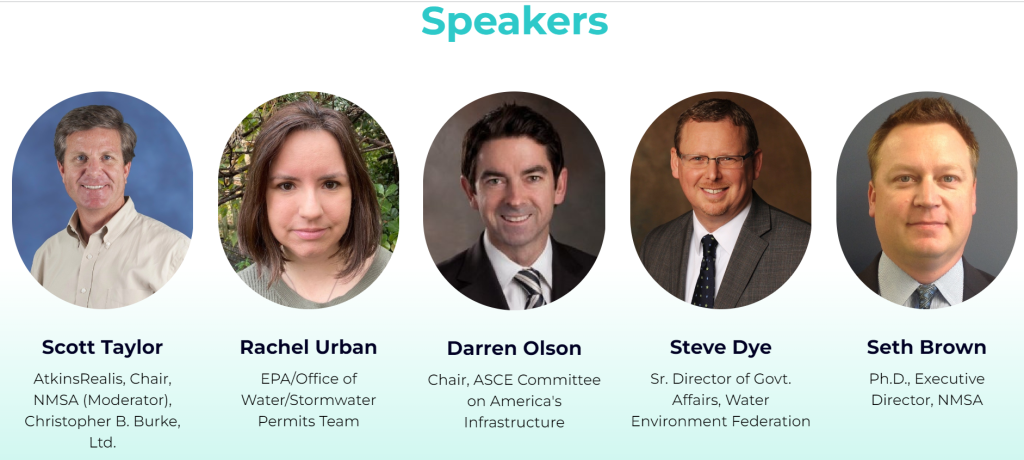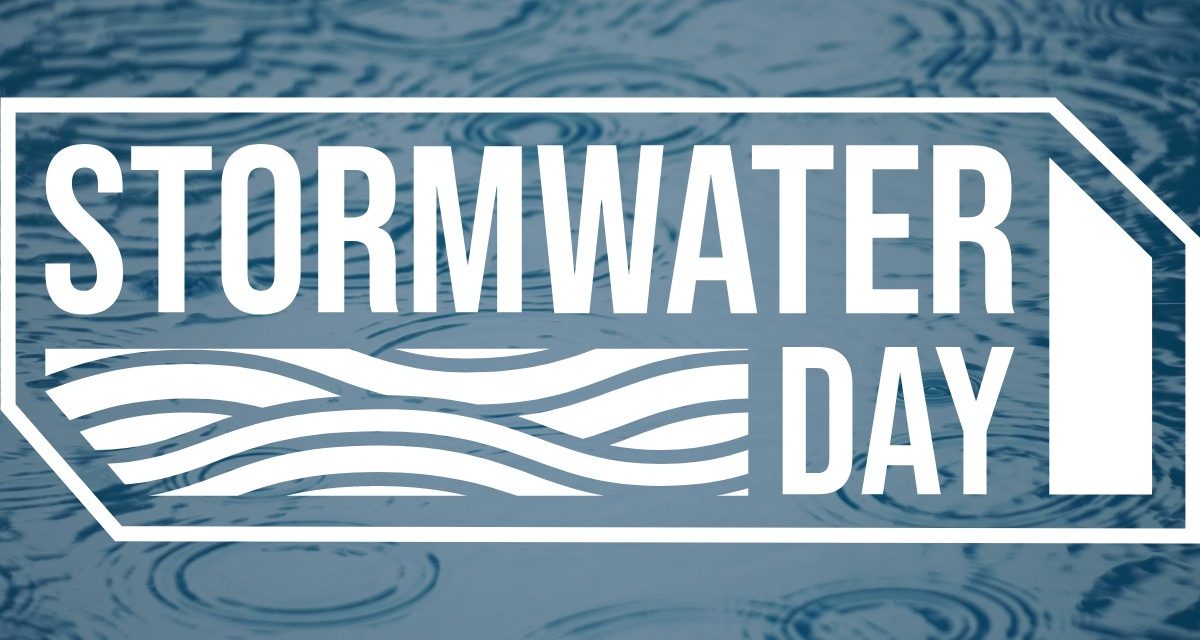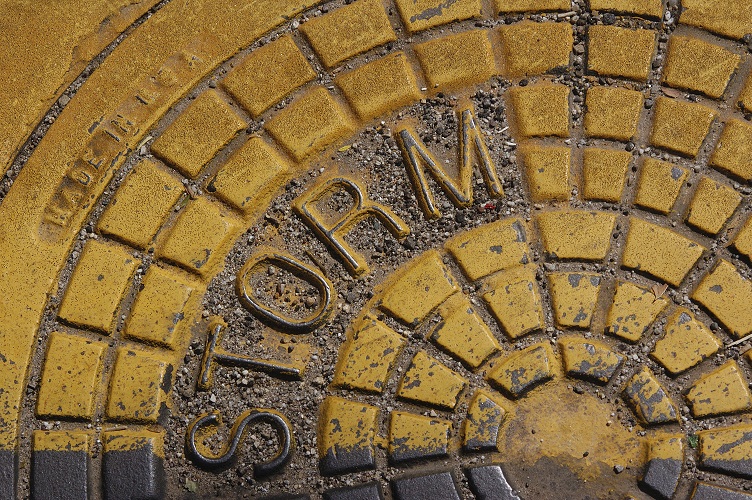Stormwater professionals from across the U.S. reflected on more than three decades of progress on November 16, which marked the debut of National Stormwater Day.
The new, annual holiday, established by the U.S. National Municipal Stormwater Alliance (NMSA; Springfield, Virginia), celebrates the anniversary of the U.S. Environmental Protection Agency’s (EPA) Municipal Separate Storm Sewer System (MS4) program, established in 1990. The MS4 program provides a comprehensive regulatory framework for urban stormwater management, setting standards to help municipalities and property managers protect water quality and control flooding.
NMSA Executive Director Seth Brown described National Stormwater Day as a natural extension of several similar campaigns at the local and state levels to raise the profile of stormwater management issues. For example, California, Wisconsin, and Ohio already designate stormwater awareness holidays, as do such cities as Phoenix; St. Cloud, Florida; and Omaha, Nebraska. These campaigns not only seek to educate the public about the importance and historical success of the stormwater management sector, but also emphasize the significant work ahead and highlight investment needs.
“When you look across the country, you see hundreds or even thousands of examples of community-based programs to engage with the public on the significance of stormwater management,” Brown said. “School curricula in many areas now include information on watersheds and the impacts of urbanization. With these grassroots efforts occurring, it is only fitting that a national recognition be made to mirror the great work happening at the local level.”
Reflecting on Challenges and Successes
To mark the inaugural National Stormwater Day, NMSA hosted a celebratory webcast that was attended by nearly 500 people. Speakers represented NMSA as well as EPA, the Water Environment Federation (WEF; Alexandria, Virginia), and the American Society of Civil Engineers (ASCE; Reston, Virginia).
Rachel Urban, a member of the EPA Office of Water’s Stormwater Permits Team, discussed the growth of the stormwater sector’s regulatory landscape since 1990 and explored how the sector’s goals and challenges continue to evolve. The number of regulated MS4 permittees in the U.S. now exceeds 7,500, Urban said, including municipalities of all sizes as well as watershed organizations, university campuses, highways departments, and others. The focus of these permittees also has developed, targeting a wider portfolio of contaminants — in 1990, water quality regulations mainly concerned sediments, metals, and nutrients. Today, stormwater managers contend with such emerging threats as polycyclic aromatic hydrocarbons (PAHs), per- and polyfluoroalkyl substances (PFAS), 6PPD-quinone, and more. At the same time, Urban said that regulated entities are paying more attention to priorities such as source control, climate change adaptation, and integrated planning.

Urban cited examples of successful stormwater programs, such as an innovative illicit discharge detection and elimination program in Portage County, Ohio; infrastructure targeting harbor debris in Baltimore that has become a high-profile tourist attraction; and efforts to align stormwater management efforts with other municipal priorities in San Mateo County, California, that demonstrate these trends.
“These are single snapshots of single communities, but when you take all of these examples and consider those that are happening in other communities, that’s really when these actions can add up across the country and make a big difference for water quality,” Urban said.
Stormwater programs across the country have made flooding and water quality challenges more visible, which in turn has made the need for greater investment in stormwater management capabilities more apparent. Darren Olson, Chair of the ASCE Committee on America’s Infrastructure, described how including stormwater as a category for the first time in ASCE’s 2021 Report Card for America’s Infrastructure emphasized those needs. Drawing on a wealth of data from WEF, NMSA, and other sources, the 2021 report card assigned a ‘D’ grade to the state of U.S. stormwater infrastructure, indicating widespread gaps in infrastructure coverage as well as growing issues with aging and deterioration in infrastructure constructed during the early days of the MS4 program. The report card estimates a roughly USD $8 billion funding gap to ensure nationwide compliance with current stormwater regulations.
“One thing we noted in the report card is that the capacity of stormwater infrastructure is in reality decreasing because of the higher rainfall rates and greater urbanization we’re seeing throughout the country,” Olson said. “We’re seeing that not only is our stormwater infrastructure aging, but the capacity of it is also decreasing as it’s sitting in place.”
The nation’s stormwater infrastructure will be reassessed in 2025. Olson called on webcast attendees to provide data on their stormwater infrastructure assets and challenges to help inform the report card by contacting his team.
Building Awareness for a Better Future
Webcast speakers contended that boosting awareness —by both sharing information within the sector and improving the ways stormwater professionals communicate with customers and legislators — is the best way to address the sector’s significant budget shortfalls as well as some of its other lingering challenges.
For example, Urban described a lack of best practices for sharing information across different stormwater jurisdictions. These include gaps in standardized performance metrics to compare the efficacy of different types of infrastructure as well as the difficulty of quantifying certain infrastructure co-benefits, which might make innovative green infrastructure designs less attractive to cash-strapped, risk-averse municipalities. Brown described two ongoing NMSA efforts that aim to address these needs: the National MS4 Online Resource, which provides centralized access to an array of case studies and technical manuals related to such topics as public outreach, financing, and long-term performance monitoring; as well as the Stormwater Testing and Evaluation for Products and Practices (STEPP) program, which focuses on developing standardized metrics to compare infrastructure performance. These metrics help stormwater managers make more-informed decisions by boosting confidence in the efficacy of prospective infrastructure designs, Brown said.
“Why would we invest millions and billions of dollars into infrastructure and not have a lot of confidence that it’s going to perform the way we need it to?” Brown said. “With public dollars, we need to have more confidence, frankly, than we’ve had in the past. This is what STEPP is all about.”
Steve Dye, WEF Legislative Director, described the importance of using advocacy tools such as STEPP, ASCE’s Report Card for America’s Infrastructure, and other resources to connect with legislators on stormwater issues. He urged attendees to join WEF and NMSA for the next National Stormwater Policy Forum, set to take place April 8, 2024, in Washington, D.C. During this annual event, stormwater professionals and advocates meet to identify the sector’s most pressing regulatory and budgetary needs and directly engage congressional staff in support of these priorities.
“Being a vocal sector and letting members of Congress know that there are important needs out there helps us at least maintain certain levels of funding or reduce the amount that will be cut, even if everything else is getting cut around it,” Dye said. “It’s important that we be the squeaky wheel, so to speak.”
While all webcast speakers described significant obstacles facing stormwater professionals, each expressed optimism that the sector is well-suited to surmount those obstacles — particularly as the sector grows in visibility and attracts new talent.
“I’ve been in stormwater for a while, longer than I care to admit,” Urban said. “And I know that there are a lot of lessons I’ve learned from being in stormwater for so long. But there’s also a lot to be said for people who are newer, and they’re coming into the field with fresh eyes and new ideas. We each hold a piece of the puzzle that shapes what’s happening next.”
Watch a full recording of the inaugural National Stormwater Day webinar:

ABOUT THE AUTHOR
Justin Jacques is editor of Stormwater Report and a staff member of the Water Environment Federation (WEF). In addition to writing for WEF’s online publications, he also contributes to Water Environment & Technology magazine. Contact him at jjacques@wef.org.







